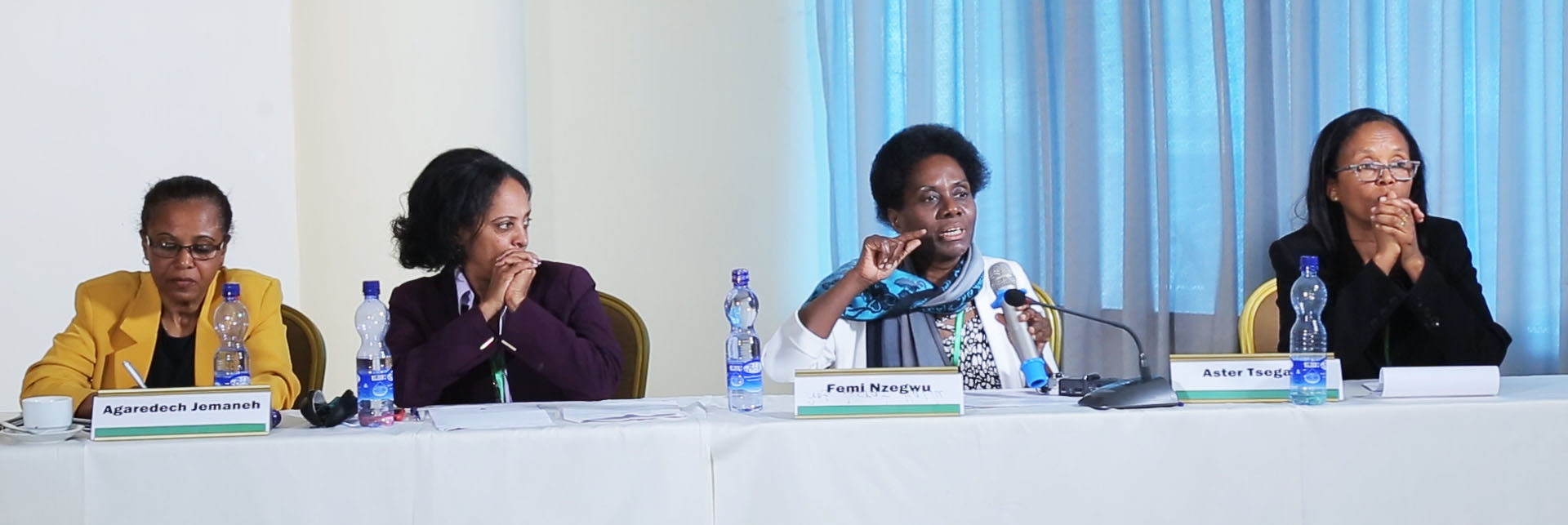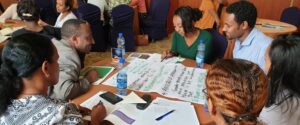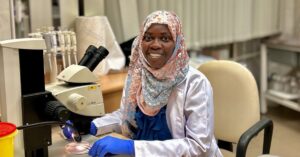
History and context can guide gender equity plans
Gender equity was a key topic of discussion during the research equity dialogue events in Uganda and Ethiopia last year. Reflecting on the issues and arguments raised at these events, Dr Femi Nzegwu, Director of the SERKS programme, considers gender inequity in research and higher education from a historical, contemporary and future-focused perspective.
The lack of representation of women in national research systems is well recognized and cited, but is not so often looked at in the context of a rich history of gender complementarity in Africa.
Women make up approximately 32% of researchers worldwide but there are regional variations. For example, overall in South and East Asia just 19% of researchers are women but in Sri Lanka the percentage is 46% while in Bangladesh it is just 14% (UNESCO 2018).
In Africa, where the overall percentage of 31% is very similar to Europe and North America, there are also regional variations, with the highest percentage of female researchers being 45% in Central Africa Republic. In Uganda and Ethiopia, where we held dialogue events on equity last year, women make up 29% and 13% respectively of the researchers.
But the statistics do not paint the whole picture of the imbalances in the numbers of men and women in higher education and research, particularly in how these imbalances are being addressed today or how much energy there is to improve gender parity in some countries.
Informed by history
I believe that history is a major contributor to today’s imbalances. Most serious and insightful scholars of gender agree that the representation of the roles and value of both men and women in African society has become distorted in the wake of the 19th – 20th century conquest of Africa by the leading states of Europe. There is an abundance of evidence in this area.
It is impossible to homogenize an African continent-wide gender experience. However, across many of the constituent nations and peoples, complementarity of the sexes has enabled society to function and endure, with women and men working equally and together for the survival of the family and the community.
There are numerous examples of women stepping forward in a national emergency to lead – in 1929 with the historical women’s uprising in Igboland; the Asante uprising in the 1800s; the Gikuyi against British occupation; the role of women in the general strike in Senegal as part of the politics of the restoration of independence to name a few (some more information can be found, for example, here and here).
Such stories and history need to be recognized as we think about the problems of gender imbalances today.
For me, one of the most obvious examples of the imposition of differing gender norms is the debate in many African gender discussion forums about women’s roles in the home versus their professional roles. Women in the west, since they won the right to vote in the early 20th century, have been resisting, rightly, a societal definition that at the time assessed a woman’s primary worth as her home-making role. I feel it is important that similar debates on this same subject in Africa are understood within the historical context. The vast majority of women in Africa have always worked outside the home – in agriculture, small businesses, and other sectors of the economy. And yet, this crucial role of women was neither recognized nor incorporated into the new economic structures constructed following conquest.
Against the historical background lies the reality of gender imbalances and inequities in research/higher education and elsewhere in society. These gender biases can and do define childhood, adolescence and adulthood experiences as well as choices such as whether or not a woman pursues a research career or a man a “non-traditional” male career (for instance being a nurse). These choices go on to define access to opportunities for some over others, access to knowledge and skills and the right to live in an enabling environment that recognizes and promotes the best of a person regardless of who they are.
Mentors, champions and leaders
These two aspects – the historical context of gender complementarity, and contemporary disparities, were emphasized during the gender sessions in the Ethiopia and Uganda dialogues.
During the Uganda dialogue, the speakers affirmed the positive and critical role that both women and men play in society and the need to value and focus attention of the complementarity of these roles in national development.
In Ethiopia, participants talked about the benefits of female leadership and the encouraging steps that have already been taken within the country to bridge the gap. In addition to the current female prime minister in the country, Ethiopia’s Ministry of Science and Higher Education now has a woman minister. Furthermore, the defence minister, the minister of peace, and the deputy permanent representative to the UN are all women. Ethiopia also has equal gender representation in cabinet.
Asked why women in leadership is important, the response from one participant in the dialogue event was emphatic: “We don’t need to justify this; [women] are 50% of the population, therefore women in leadership are a must.”
Both dialogue events led to some clear recommendations and actions for improving gender parity in national research systems, for example, through gender working groups and incorporation of gender recommendations into national plans.
In Uganda, participants of the event defined gender parity to be “same chances for women and men to realize their own capabilities without discrimination – and extra chances for those starting from a disadvantaged position.” The group talked of the need for mentoring and networks to support women in research. However, they felt that solutions advanced must benefit both women and men – the need for female and male research champions and mentors was mentioned.
A review of the curriculum, teaching and learning materials was called for, along with studies to better understand the blockages to the implementation of gender equity policies that have already been agreed at the institutional level. Looking towards the future, participants agreed that greater work in the community would be necessary in order to begin to correct these inequities at a much earlier age.
As in Uganda, the Ethiopian dialogue agreed the responsibility of universities and research institutions to reach out to support students and potential researchers to better understand their history, critique existing gender roles and enable them to attain their own dreams – either in research or other professional fields.
Five convictions
I came away from our discussions in Uganda and Ethiopia about gender equity with five convictions:
- Addressing issues of gender inequity is the responsibility of both men and women – and any real attempt to redress this must ensure that the effort is collaborative and targeted at those who need support.
- The key role of women across this continent in sustaining society needs to be “un-ignored” and this major contribution given its due recognition through scholarship, policy, advocacy and other forms of national discourse.
- The many strong voices calling for gender inclusion across many divides need to come together and work together to address the multi-faceted impacts of this inequality.
- Platforms such as the discussions across the research system that took place in Uganda and Ethiopia could be particularly well placed to draw these different voices, skills and capacities together to define an alternative path.
- Our challenge is to promote the types of transformative critical thinking that are needed to deconstruct and reconstruct our understanding of the historical and continuing contribution of women and men equally to society’s advancement; and then build on this within our current education and research system to make it truly inclusive and supportive of all.

 Previous Post
Previous Post Next Post
Next Post


